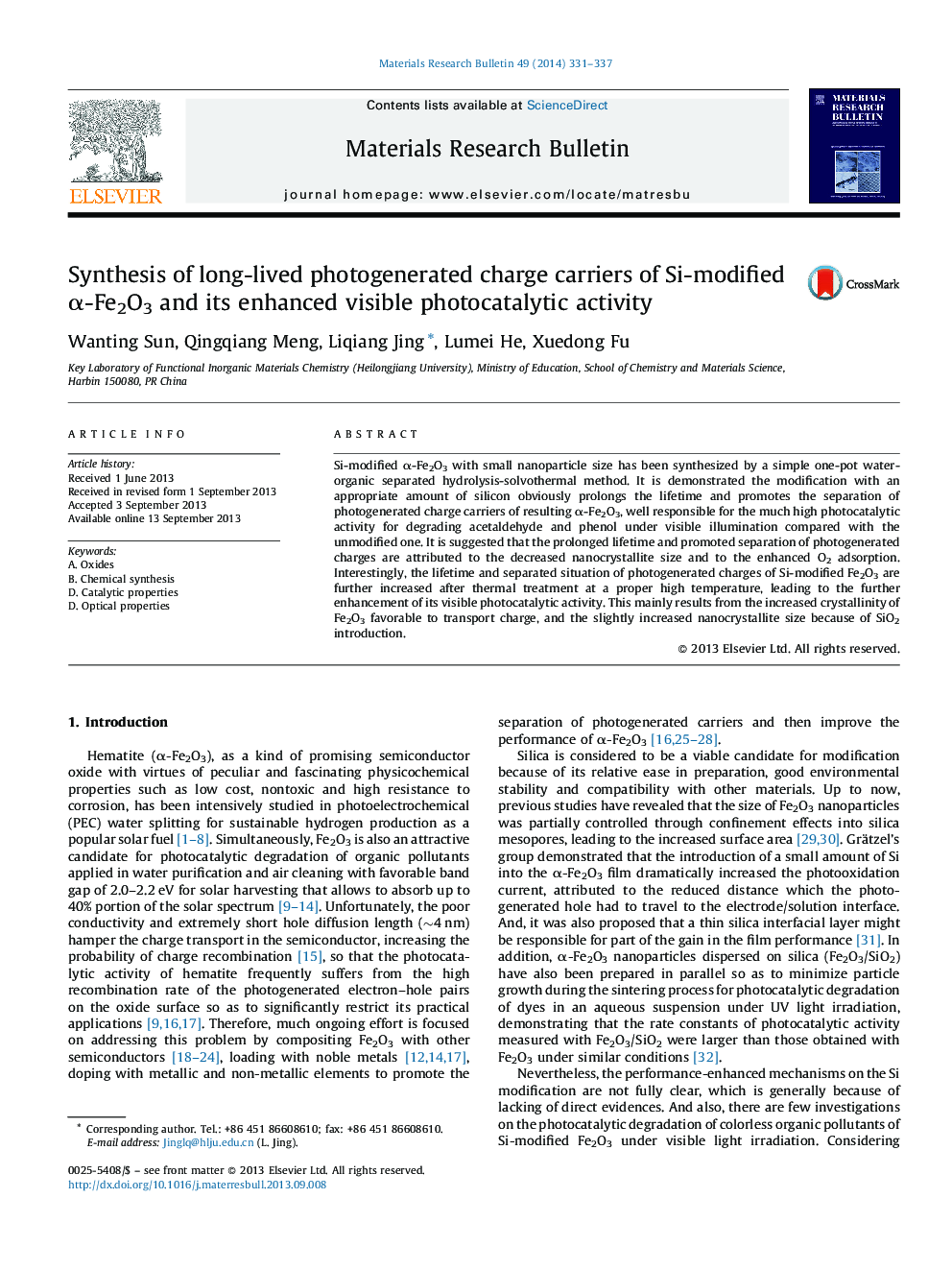| Article ID | Journal | Published Year | Pages | File Type |
|---|---|---|---|---|
| 1488620 | Materials Research Bulletin | 2014 | 7 Pages |
•Si-modified α-Fe2O3 with small nanoparticle size is controllably synthesized by a simple one-pot water-organic two-phase separated hydrolysis-solvothermal method.•Modification with an appropriate amount of silicon obviously prolongs the lifetime and promotes the separation of photogenerated charge carriers.•Lifetime and separation of photogenerated charges of Si-modified Fe2O3 are further increased after treatment at a proper high temperature.•Prolonged lifetime and promoted separation of charges result from decreased nanocrystallite size, enhanced O2 adsorption, and increased crystallinity.•Prolonged lifetime and promoted separation of charges lead to the obviously improved photocatalytic activity of α-Fe2O3.
Si-modified α-Fe2O3 with small nanoparticle size has been synthesized by a simple one-pot water-organic separated hydrolysis-solvothermal method. It is demonstrated the modification with an appropriate amount of silicon obviously prolongs the lifetime and promotes the separation of photogenerated charge carriers of resulting α-Fe2O3, well responsible for the much high photocatalytic activity for degrading acetaldehyde and phenol under visible illumination compared with the unmodified one. It is suggested that the prolonged lifetime and promoted separation of photogenerated charges are attributed to the decreased nanocrystallite size and to the enhanced O2 adsorption. Interestingly, the lifetime and separated situation of photogenerated charges of Si-modified Fe2O3 are further increased after thermal treatment at a proper high temperature, leading to the further enhancement of its visible photocatalytic activity. This mainly results from the increased crystallinity of Fe2O3 favorable to transport charge, and the slightly increased nanocrystallite size because of SiO2 introduction.
Graphical abstractLifetime of photogenerated charges of α-Fe2O3 is prolonged after modifying SiO2 based on the time-resolved surface photovoltage responses, and further prolonged by subsequent high-temperature thermal treatment, leading to its obviously improved photocatalytic activity.Figure optionsDownload full-size imageDownload as PowerPoint slide
